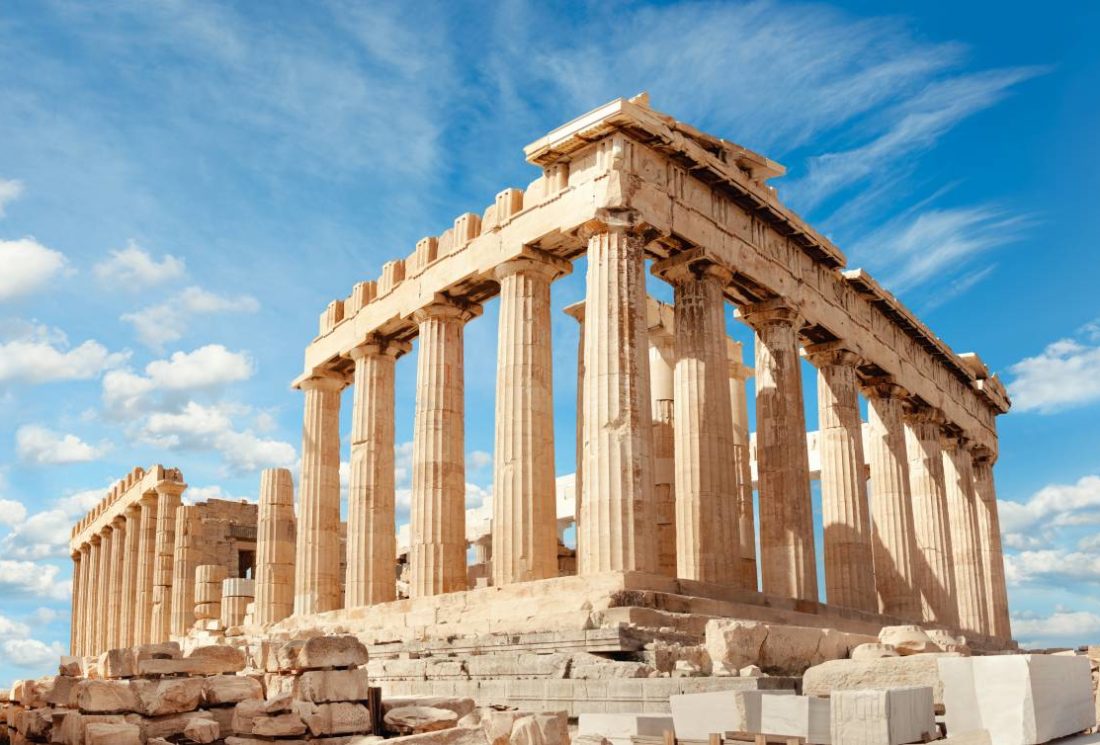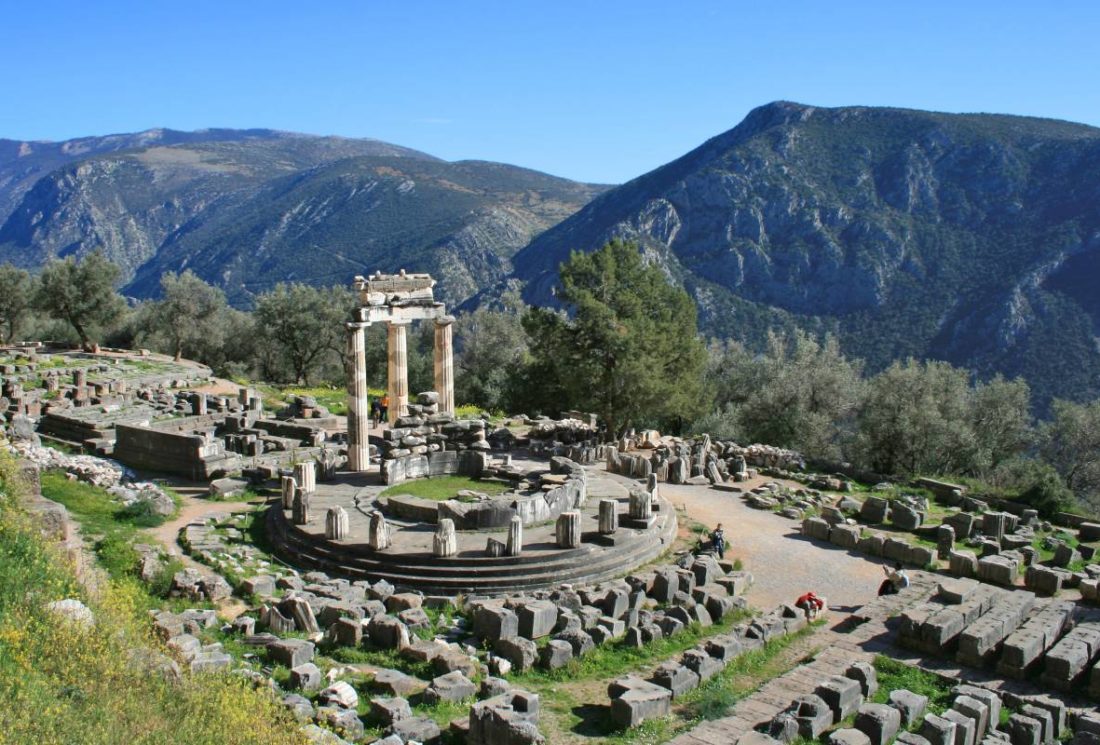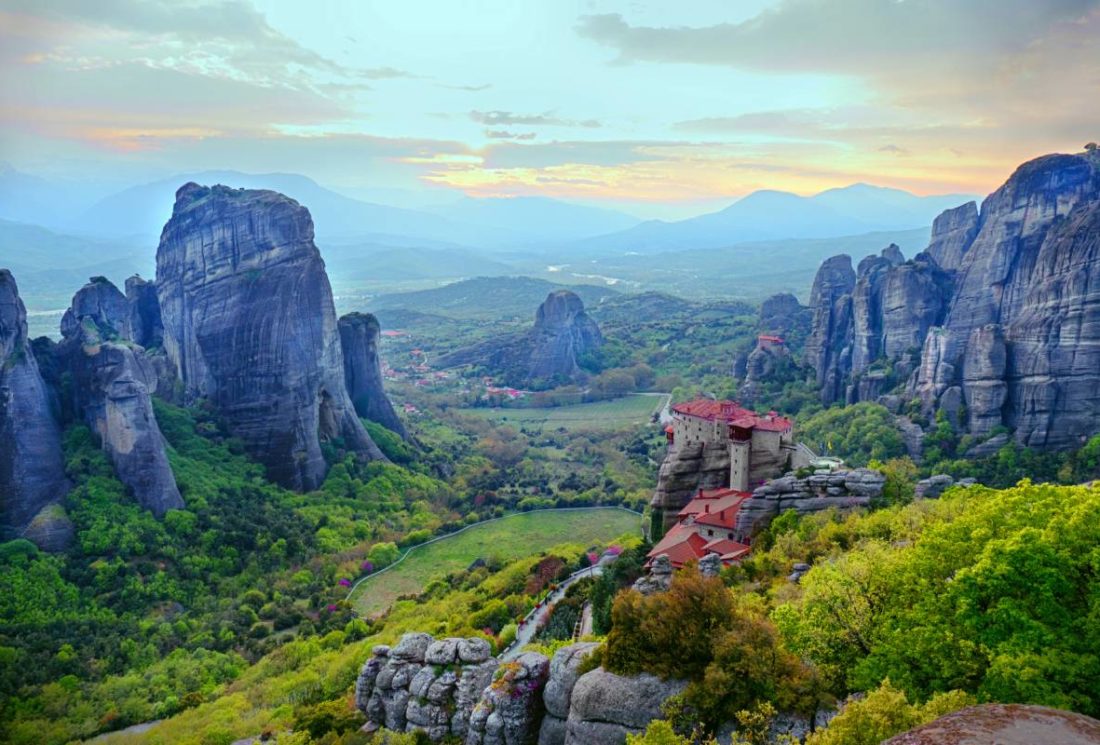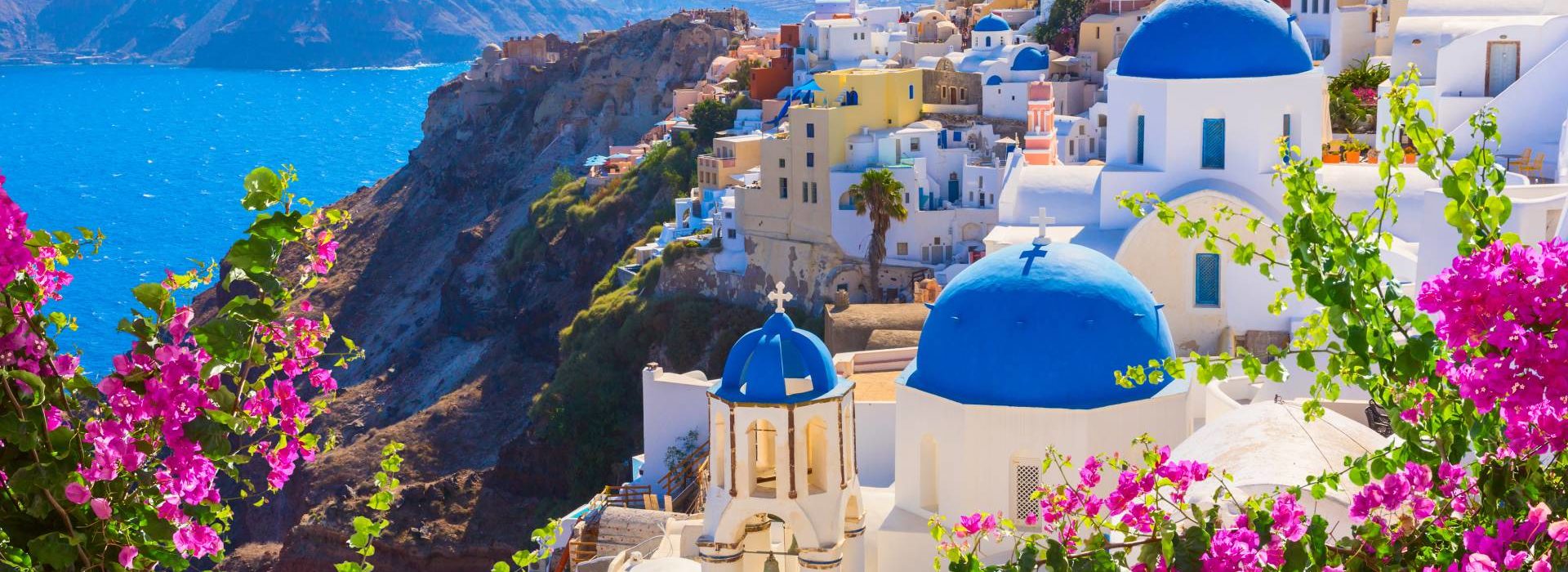
A Travel Guide to Glorious Greece
From ancient ruins to sun-drenched beaches
It’s impossible to get bored whilst on holiday in Greece partly due to the sheer size of it. Once you have explored the mainland, there are hundreds of islands scattered across the Aegean and Ionian Seas just waiting to be discovered. From ancient Athens to the breathtaking views in Santorini – there is something for everyone.
Whether you’re heading to the mainland or an island for a romantic getaway with your significant other, taking the kids on a family holiday or travelling solo, you’ll find plenty of things to do in Greece.
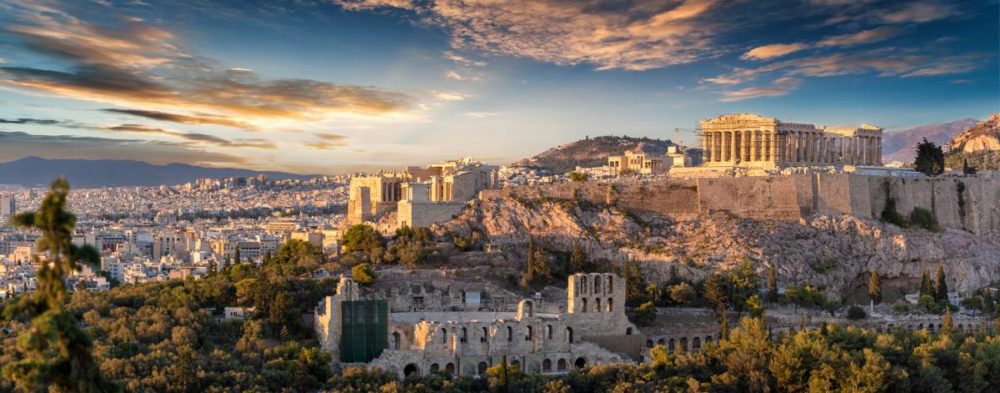
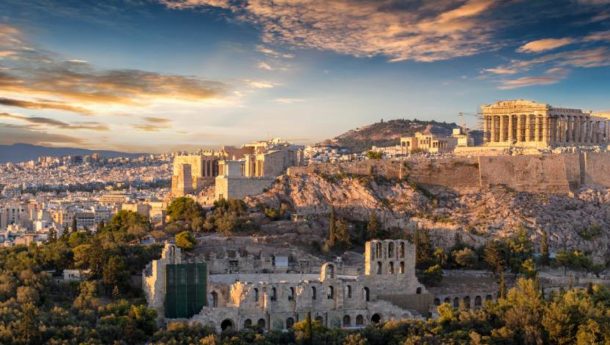
Greece at a glance
This country has a rich history that centres around ancient mythology which means, around nearly every corner, you’ll have the opportunity to step back in time as you explore the many archaeological sites. Plus, it benefits from an extensive coastline where, alongside golden shores, you’ll find sandy beaches that range in colour, from volcanic black to pastel pink.
Intrigued? Well, that is just the start…
Travel advice when visiting Greece
According to gov.uk, more than three million Brits visit Greece every year and the majority are without incident. That being said, you should still take out travel insurance, just to be on the safe side. It is also important to be aware of your surroundings and keep any valuables out of sight or leave them in your accommodation.
Safety tips
Earthquakes are possible here, the last one was in Magoula, Attica in July 2019. The summer has been known to experience extreme weather – this has resulted in wildfires and disrupted travel. In 2018, there were cases of West Nile virus – to avoid this make sure you wear mosquito repellent. It is also worth being aware that large fines and even prison sentences are possible for indecent behaviour, especially after drinking.
Transport
Whether you are island hopping or travelling across the mainland, there are various ways to travel between destinations. If you are visiting more than one island or travelling to and from the mainland, you can take a plane or ferry. If travelling by ferry between islands, it is quickest and easiest to stay within a cluster. This includes: Cyclades, North Aegean, Dodecanese, Ionian, Sporades and Saronic. The latter are the closest to the capital on the mainland.
You can also rent a car to travel around the mainland or your chosen island at your own pace. Alternatively, you can travel by train – Athens to Thessaloniki is the most popular route or the KTEL buses – which connects the capital to towns across the mainland.
Average accommodation costs
Accommodation is around 54€ a night for one person and 109€ for two people.
The best beaches in Greece
You’ll no doubt want to spend some of your holiday soaking up the sun on one of Greece’s many beautiful beaches. Here are a few that you will definitely want to see.
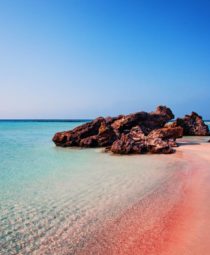
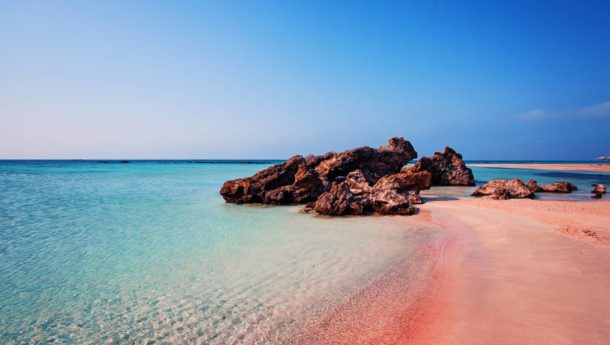
Elafonissi Beach
In the southwest of Crete you’ll find this mile-long strip of pink sand that has been listed among the best in the world. It is a unique sight as pink sand is incredibly rare – there are actually only a few beaches in the world that are this colour. The colour may change slightly, depending on when you visit. It can range from a very light to quite a dark pink. From here you can walk across to the island of the same name where you might be able to spot loggerhead sea turtles.
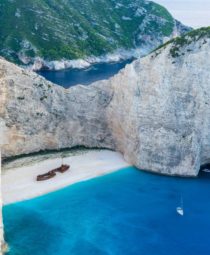
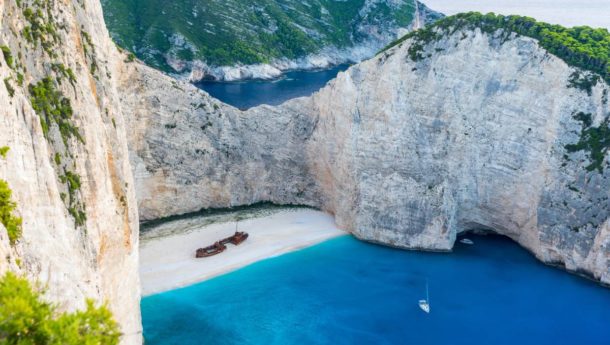
Navagio Beach
You’ll have to take a boat to visit this cove in Zante which is also known as ‘Shipwreck Beach’ or ‘Smuggler’s Cove.’ You’ll notice there is a stranded Freightliner on the sugar-white sand which is sheltered by towering cliffs. It’s believed that it was once used for smuggling and in the early 80s it ran aground during a storm and has been here ever since. As well as exploring the boat from the sand, you might like to head to the viewing platform to look down on it from above. If you can, head here early in the morning to avoid the crowds.
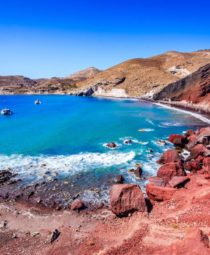
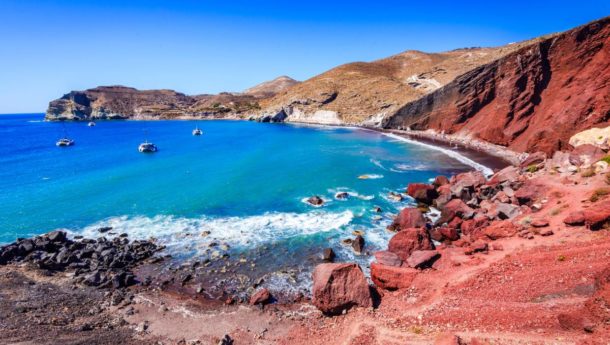
Red Beach
There are plenty of beaches to choose from in Santorini but this one stands out for its unusual colour. The island is famous for black volcanic sand but this beach is actually red. The colour spreads right up the cliffs and across the pebble sand, making it one of the most unique in the world. It can be found on the south coast and is a wonderful place for snorkelling due to the volcanic rock in the water as well as being the most beautiful spot to watch the sunset.
Excursions in Greece
With so much to see and do in Greece, why limit yourself to one place? It is worth planning a few day trips and excursions, so you make the most of your time and can experience as much as possible.
It is easy to jump on a ferry and hop between islands and the mainland. There are six clusters: Cyclades, North Aegean, Dodecanese, Ionian, Sporades and Saronic, as well as the popular holiday destination of Crete – the largest island in Greece. Athens is a good starting point because hundreds of ferries start and end here everyday. But, once you know where you are staying check out the ferry routes to see where is best to visit.
It is also possible to visit Turkey, especially if you’re staying on one of the Dodecanese hotspots such as Rhodes, or the popular island of Kos. Alternatively, if you’re staying in Mykonos then you can visit Delos – a UNESCO World Heritage Site, while Vidos Island is the perfect day trip from picturesque Corfu.
If you’re looking for a day trip, especially if you have little ones in tow, then head to one of the many water parks and aquariums. You’ll find a great choice across Rhodes as well as Corfu, Crete, Zante and Kos.


Food and drink in Greece
Greece is the ideal destination for foodies. Here traditional tavernas and modern restaurants serve up the freshest local ingredients.
Menus are filled with seafood caught off the extensive coastline and both grilled and spit-roasted meats are incredibly popular. Plus, many dips that you may already be familiar with, such as taramasalata and tzatziki, originate here.
To get your mouth watering, some of the popular Greek food you can expect to try, includes: souvlaki, moussaka, dolmades, tomatokeftedes, Greek salad and gyro. If you have a sweet tooth, there are plenty of desserts to choose from too, such as: baklava, loukoumades, galaktoboureko and kataifi.
In Athens, you’ll want to book a table at Orizontes on Lycabettus Hill. Take your seat on the balcony and look out across the city, past the Acropolis and out to the Aegean Sea, from one of the highest peaks in the capital. Make sure you’re here for sunset – the views are spectacular! Against the beautiful backdrop you can treat your taste buds to Mediterranean dishes created using seasonal ingredients.
To dine with a view of the Acropolis you can also head to Strofi’s roof terrace. Admire the ancient architecture while you’re served traditional Greek dishes.
The best islands for food lovers include: Crete, Naxos, Sifnos, Santorini, Folegandros and Lemnos.
Thirsty? Expect to try ouzo, the country’s national drink as well as raki and tsipouro. Greece is also the birthplace of the god of wine, Dionysos, and has the longest wine production and consumption history, dating back 4,000 years. Visit the vineyards, join a food and drink tour and taste these specialities for yourself.
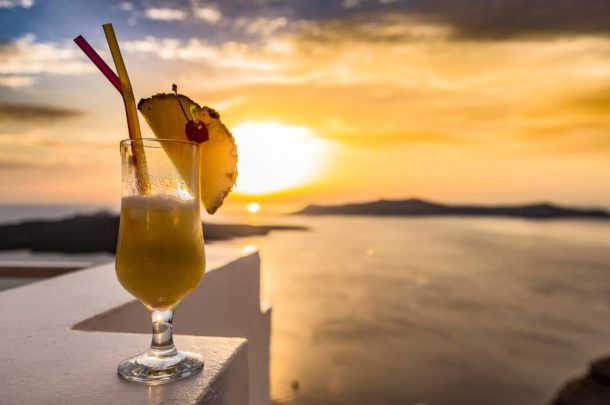
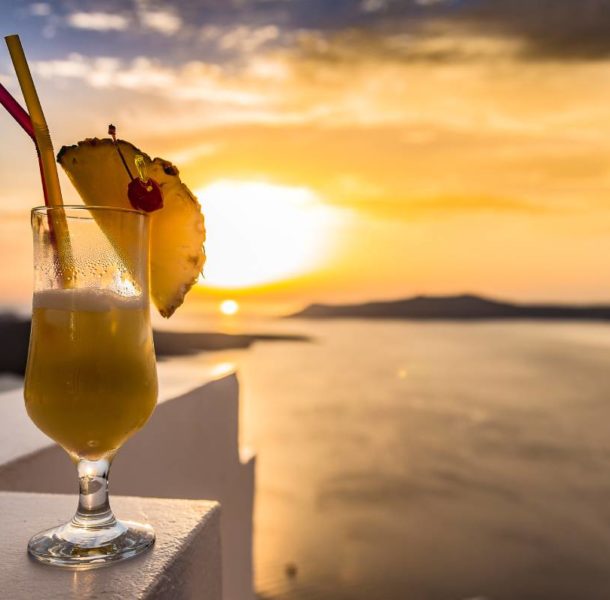
Greece nightlife
Whether you fancy a few after-dinner cocktails or would rather party from dusk until dawn, there are three main resorts you’ll want to head for.
There are more than 1,000 bars in Greece’s most popular party resort, Laganas in Zante. It is also one of the cheapest with plenty of drinks’ promotions to take advantage of. Expect silent discos and foam parties that continue until the sun comes up.
Wander the strip in Malia, Crete and you’ll be met with promoters trying to tempt you into their club. There is a constant party atmosphere here and hundreds of bars and clubs to dance the night away.
Kavos in Corfu is one of the smaller party resorts but there are still more than 80 places to choose from along the strip. One not to miss is Atlantis – this is an open-air club on the beach where you’ll no doubt see the sunrise.
Shopping in Greece
Whether you love to shop or just want to pick up a souvenir or two, Athens is the place to head. The streets of Skoufa, Patriarchou, Ioakeim and Tsakalof in Kolonaki are lined with luxury boutiques. There are a number of shopping malls in the capital; in Kifisia these are set within impressive architecture. You can also make your way to the seafront and walk along Metaxa Street in Glyfada – this is one of the busiest shopping streets.
The shops in Plaka are perfect for art lovers, while the more alternative and handicraft shops can be found downtown on streets such as Lekka and Romvis. Close to Syntagma Square in Ermou Street you can pick up a handmade bag or leather sandals.
There are also a number of open-air flea markets where you can purchase fresh produce and local goods including Athens Central Market – Varvakeios. On one side you’ll find meat, seafood and fish, while on the other there is fruit and vegetables. Meanwhile, at Monastiraki Flea Market, you can find anything from musical instruments to jewellery.
Greece culture and art
There are plenty of museums and art galleries throughout Greece that will help you discover the country’s interesting history and learn more about the local people.
The Acropolis Museum in Athens opened in 2009, making it one of the most modern attractions in the city. In stark contrast to its ancient surroundings it is formed of glass and steel. Step inside and you can discover some of Greece’s most famous artefacts – including the Moschophoros statue and the Parthenon marbles. Make sure you pay a visit to the cafe terrace to look across at the Acropolis.
In the Archaeological Museum of Thessaloniki you’ll find artefacts from Macedonia – an ancient civilisation.
If you’re a history buff then you’ll want to visit the Museum of the Kalavryta Holocaust, the only museum of its kind in Greece. It is situated in a former schoolhouse and honours those killed by the Nazis in the Second World War. Here you can discover their story and see personal possessions.
Foodies may like the Museum of the Olive and Greek Olive Oil, which tells the story of how olives became such a central ingredient in the country’s cuisine. See the ancient oil presses and discover how olive oil has also been used in various products such as perfumes.
Don’t miss The Museum of Contemporary Art that can be found in Hora. See work by world-renowned artists and visit the exhibitions dedicated to Greek painters and sculptors.
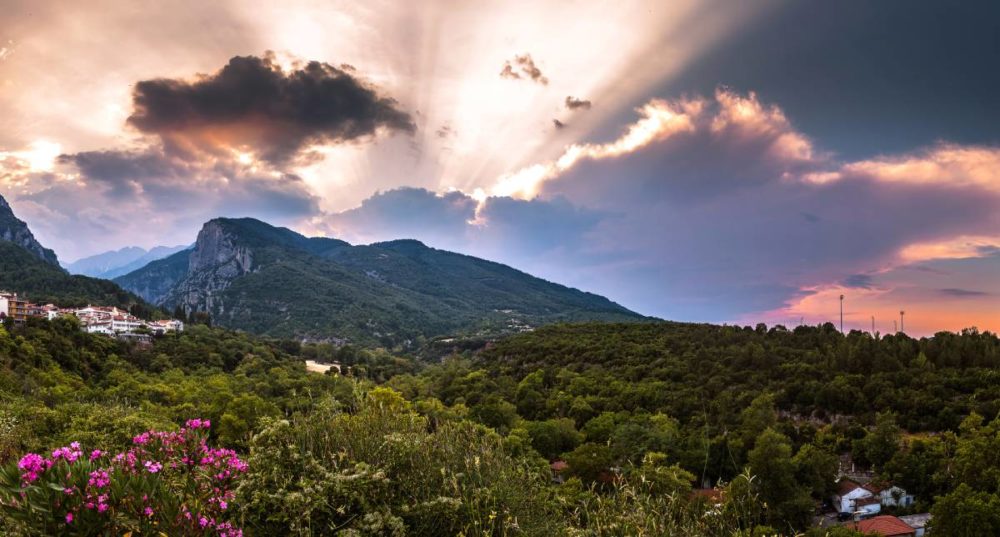
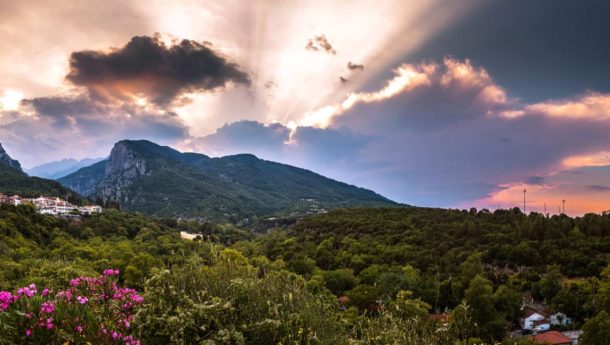
Outdoor adventure in Greece
Greece benefits from long, hot summers, making it the ideal destination for exploring the outdoors and enjoying the weather.
If you would like to climb Mount Olympus, one of the most famous mountains in the world, then head to Litochoro. From here you can trek all the way to the top or just a part of it. You’ll be walking in the same spot where, in Greek mythology, Hades is believed to have ruled the underworld and Zeus sat on his throne.
Lake Plastira, a beautiful man-made lake, is situated in the Karditsa region of Greece. You can hike the trails that surround it or ride a horse among the oak and chestnut trees. Then go canoeing or rafting on the lake itself. If you have always dreamed of horse riding on the beach, then make sure you visit Zante.
Just off Santorini, as well as taking in the most beautiful and unique views, you can swim in the hot springs of the Nea Kameni volcano.
Alternatively, you can discover the world beneath the ripples of the azure sea, off many of Greece’s stunning coastlines. Come face-to-face with bright coral and colourful fish when you go snorkelling or get even deeper and explore underwater caves and shipwrecks with a diving adventure. The best spots include: Dafni Beach in Zante, The Great Wall at Chios, Dragonisi Island Caverns near Mykonos and Foki Beach in Kefalonia.
Back on the surface, there are plenty of watersports for you to try. Santa Maria Beach in Paros is perfect for windsurfing while Prasonisi in Rhodes is ideal for kitesurfing.
On the island of Crete, you can hike the Samaria Gorge, the longest of its kind in Europe. It is almost 10 miles long and in places just four meters wide. It can take up to seven hours to trek the entire length of it.
The natural beauty of Melissani Cave is situated near Karavomilo. It has formed over centuries as water has eroded the rocks. Inside the cave, which is around two and a half miles long, you’ll find Melissani Lake. A tunnel will take you underground where you can take a boat out on the water. You might also like to visit: Balos Lagoon and Dikteon Caves in Crete and the Blue Caves in Zante.
Off-the-beaten track
Greece is jam-packed with attractions. But, once you have seen the most popular ones, you might want to head off the typical tourist trail and discover a few lesser-known but equally interesting corners of this country.
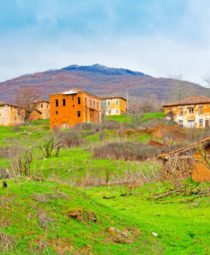
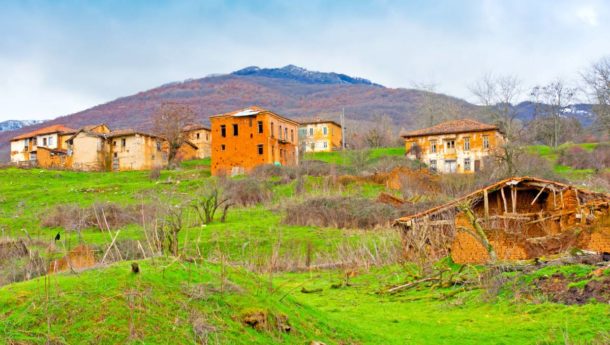
Abandoned village in Gavros
Join the road that connects Kastoria to the Prespa lakes in Macedonia and you’ll find a ghost town. This village has been abandoned since the early 1950s. Why not stop to see this mysterious place for yourself?

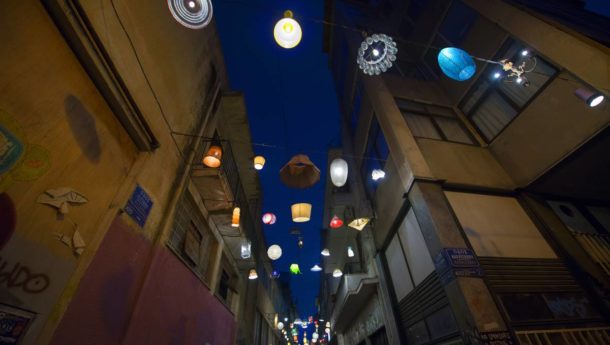
Pittaki Street in Athens
Empty stores line this alley, so you may be wondering why you would want to go and see it? It is what is above you that is particularly interesting. Around 150 lanterns, lamps and chandeliers light up this street, in the centre of the city.
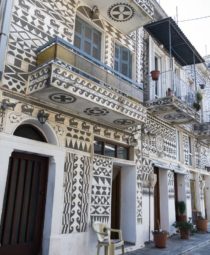
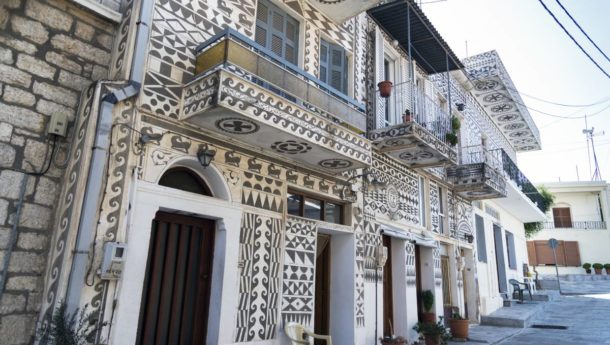
Pyrgi in Chios
This medieval village, on the island of Chios, is worth a visit to see the building facades that feature a black and white geometrical design known as xysta. These unique designs have given it the name ‘painted village.’
Best times to go to Greece
The best time to visit Greece is from mid-April to mid-June or September to mid-October. During this time the weather is pleasant but not too hot and you’ll miss the crowds that flock to this country in peak season. On the whole Greece enjoys a Mediterranean climate – April to September are hot while October to March is mild. Rain isn’t common but is possible during the winter months. During July and August the temperatures soar right up to the 30s although there does tend to be a breeze. It is worth noting that Greece is a large country and the weather can vary across the mainland and the islands. Mainland Greece has been known to reach the 40s. It is best to decide which part you intend to visit and when before checking what it will be like in that specific area.
Now you know what you can do while you’re in Greece, you just need to decide whether you’re going to head to the mainland or visit one of the idyllic islands.

Find the perfect Greece holiday
Let us help you find the perfect holiday destination for you
View all Greece holidays